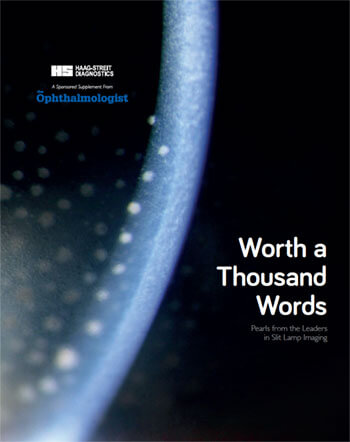
What place does slit lamp imaging occupy in the modern ophthalmology clinic? We asked Michael E. Snyder, MD (Cincinnati Eye Institute, USA).
How important is slit lamp imaging in your clinical practice?
It’s crucial! I see lots of unusual cases, and while verbal descriptions are always useful, the maxim that a picture is worth a thousand words is abundantly true in medicine. Notes in the medical record are often just a brief reminder of the patient’s condition, but imaging allows us to capture a moment in time and compare it with the observed condition after weeks, months or even years.
What are the main advantages of slit lamp imaging?
One advantage is that it enables us to precisely track the patient’s condition and compare it from one visit to the next. Such tracking may not be so important for conditions such as cataract, but in other cases – for example, in corneal inflammatory disease or ocular surface tumors – subtle changes can occur from one visit to the next. These can be very difficult to express in words, but a picture captures it all and provides a reference point for assessment over time. In some longer-term corneal inflammatory diseases, the original image will be a valuable resource as much as a year later. Slit lamp imaging is an equally excellent means of following the very short-term, day-to-day changes associated with conditions, such as corneal infectious diseases. Photographs really assist clinical judgements regarding improvement or decline in a patient’s condition.
